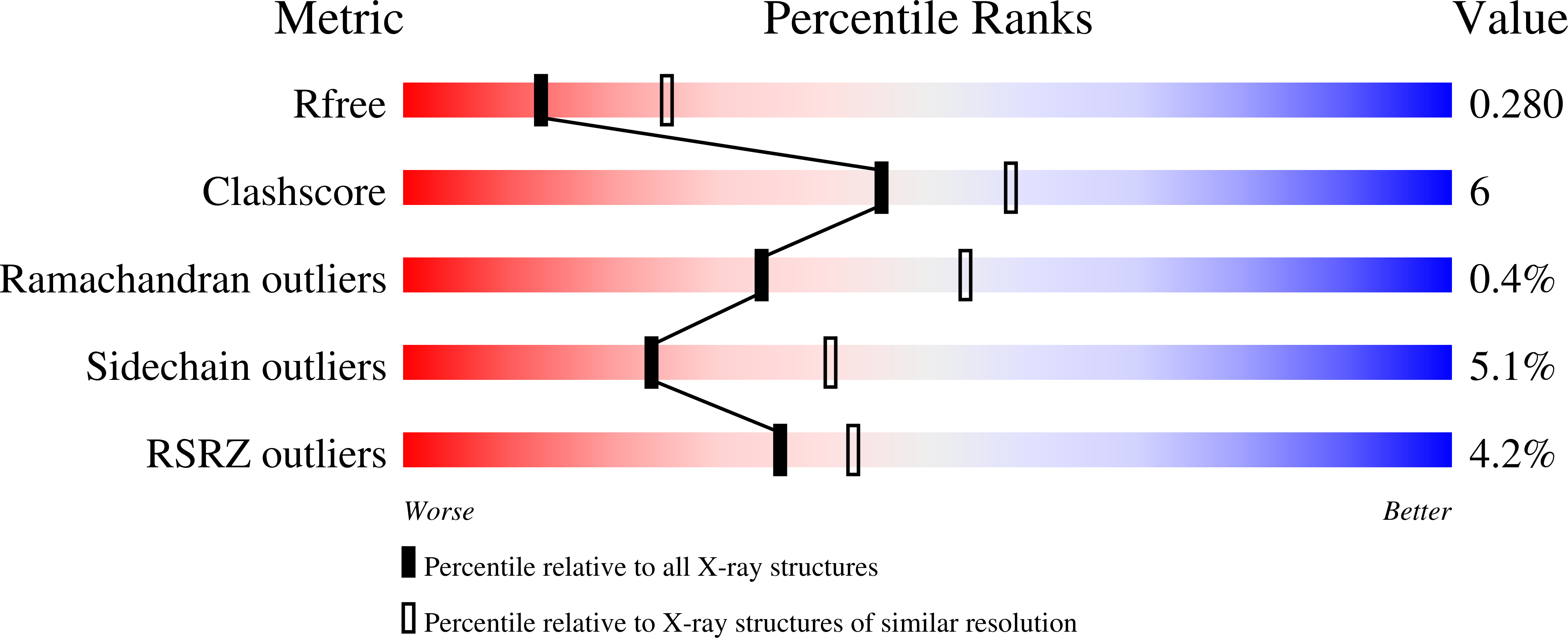Structural Insights into KCTD Protein Assembly and Cullin3 Recognition.
Ji, A.X., Chu, A., Nielsen, T.K., Benlekbir, S., Rubinstein, J.L., Prive, G.G.(2016) J Mol Biol 428: 92-107
- PubMed: 26334369
- DOI: https://doi.org/10.1016/j.jmb.2015.08.019
- Primary Citation of Related Structures:
5BXB, 5BXD, 5BXH - PubMed Abstract:
Cullin3 (Cul3)-based ubiquitin E3 ligase complexes catalyze the transfer of ubiquitin from an E2 enzyme to target substrate proteins. In these assemblies, the C-terminal region of Cul3 binds Rbx1/E2-ubiquitin, while the N-terminal region interacts with various BTB (bric-à-brac, tramtrack, broad complex) domain proteins that serve as substrate adaptors. Previous crystal structures of the homodimeric BTB proteins KLHL3, KLHL11 and SPOP in complex with the N-terminal domain of Cul3 revealed the features required for Cul3 recognition in these proteins. A second class of BTB-domain-containing proteins, the KCTD proteins, is also Cul3 substrate adaptors, but these do not share many of the previously identified determinants for Cul3 binding. We report the pentameric crystal structures of the KCTD1 and KCTD9 BTB domains and identify plasticity in the KCTD1 rings. We find that the KCTD proteins 5, 6, 9 and 17 bind to Cul3 with high affinity, while the KCTD proteins 1 and 16 do not have detectable binding. Finally, we confirm the 5:5 assembly of KCTD9/Cul3 complexes by cryo-electron microscopy and provide a molecular rationale for BTB-mediated Cul3 binding specificity in the KCTD family.
Organizational Affiliation:
Department of Biochemistry, University of Toronto, 1 King's College Circle, Toronto, ON, M5S 1A8, Canada.














